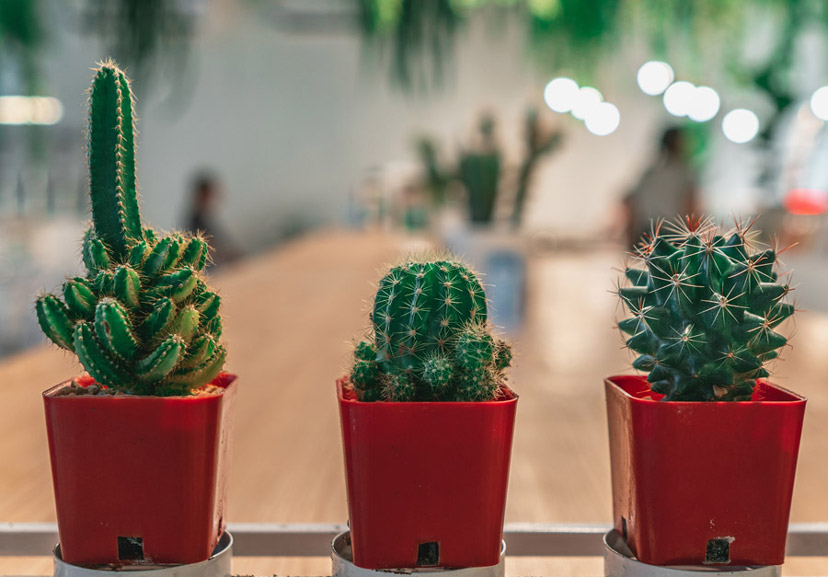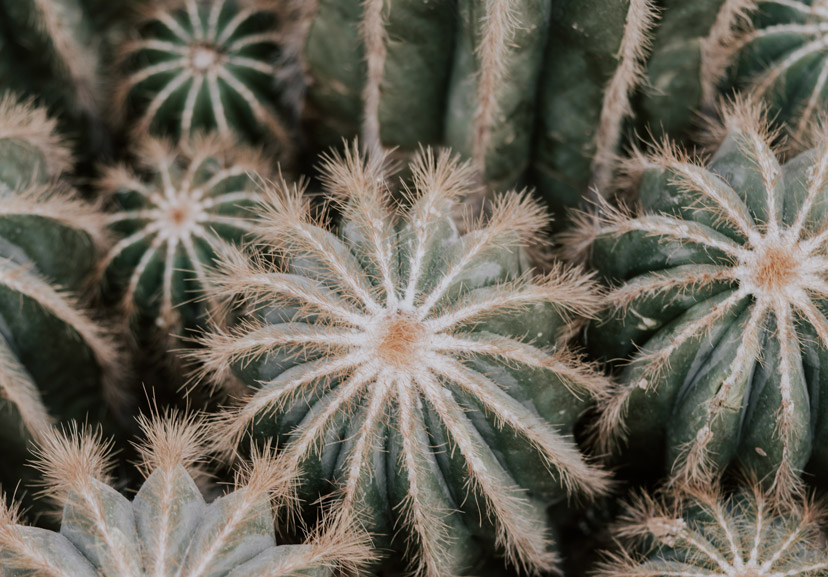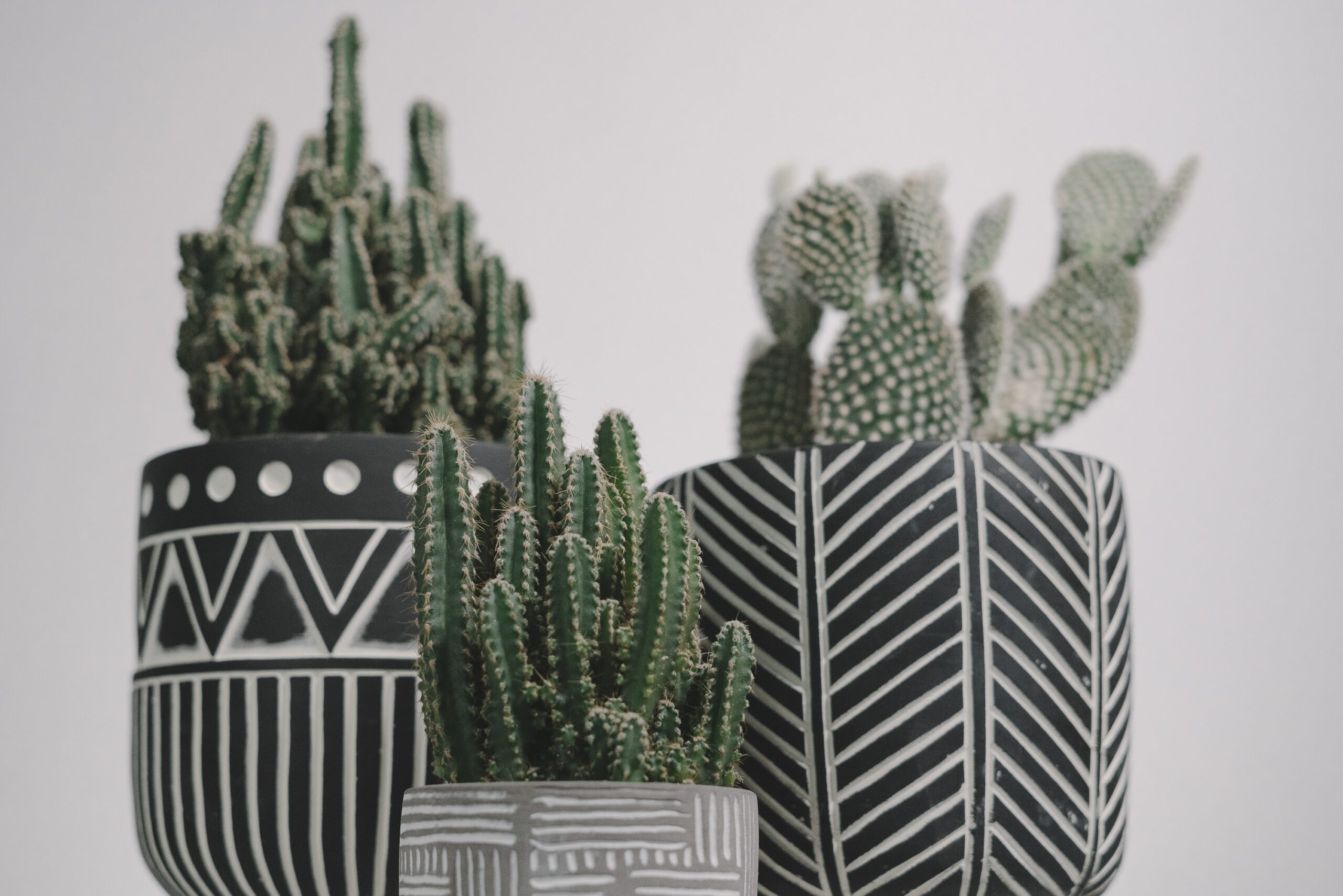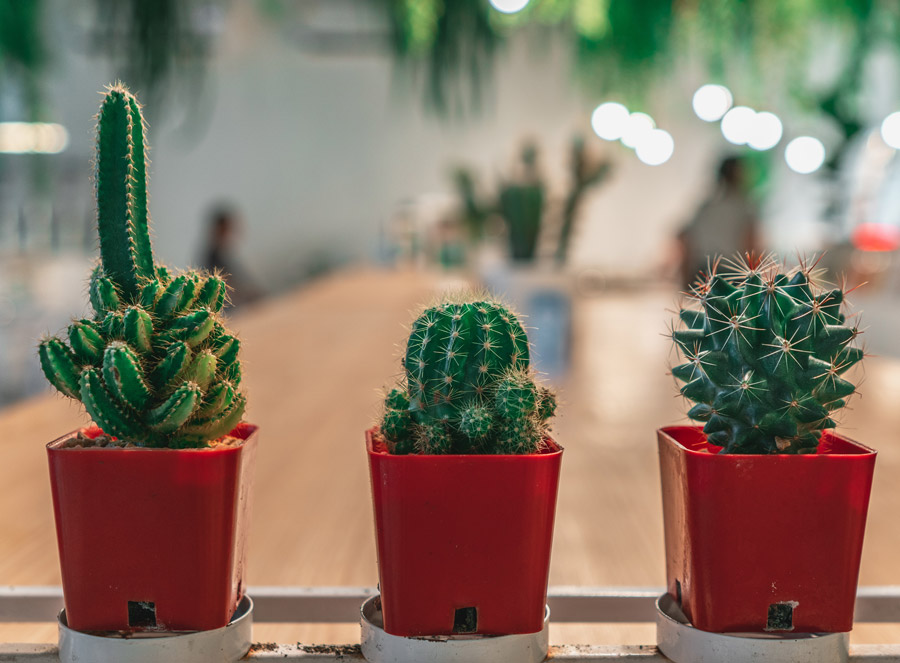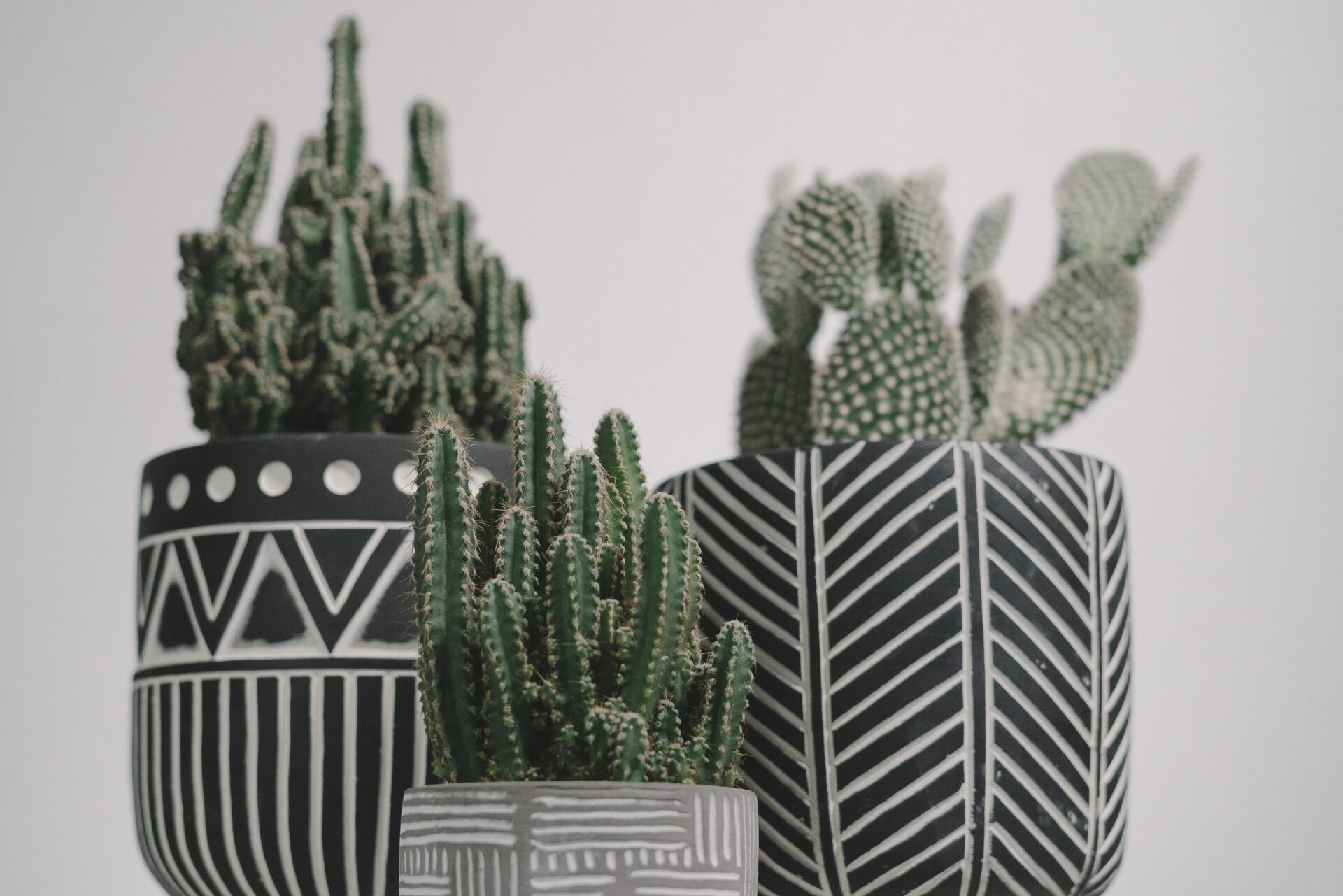About Cactus at California Flower Mall
Learn about cactus care, and the many varieties of cacti to consider when you shop at the California Flower Mall.
Some cacti are low maintenance, while others require a bit of attention. Cacti require 6 hours of sunlight a day. They can be grown either indoors or outdoors. With proper light, watering when needed and having the right potting mix, your cactus can last for decades. They require minimal supervision and are ideal for aesthetics.
Saguaro Cactus
Also known as Carnegiea gigantea, this particular species can grow to over 40ft tall. The Saguaro is native to the Whipple Mountains, the Sonoran Desert in Arizona, Imperial County,California and the Mexican State of Sonora.
It has a lengthy lifespan of approximately 150 years. Some may grow their first side arm after about 75-100 years. However, some don’t grow these arms and are referred to as Spear.
It starts flowering in between April and June. The flowers open after sunset and close mid-afternoon.Saguaros are barrel-shaped and have peripheral stems, which are the “arms.” The plant stores water, and the more it stores, the more it expands and becomes heavy. A foot of the Saguaro can weigh up to 90 pounds. A mature one can even weigh about or over a ton.
Watering cactus is an essential aspect of the plant as proper care needs to be taken for it to grow healthy. Water the Saguaro every 10 to 14 days. However, be sure to check if the soil still has moisture before watering it to avoid root rot.
The oldest Saguaro to live is the ‘Old Granddaddy,’ and it was 300 years old when it died.
Angel Wings Cactus
Also known as Bunny Ears or its scientific name Opuntia microdasys, the Angel wings cactus is native to northern and central Mexico. It does not have spines.Instead it has yellow or white glochid clusters. The glochids are thinner than the human hairs and detach when touched. Upon touching, they can cause skin irritation.
The Angel Wing cactus has no central leaves or stems but has individual segments that contain the cactus body. The sections grow in pairs which the new growth resembles bunny ears.
Budding always begins late spring and produces flowers that are 2 inches. The flowers are yellow but slowly fade to peach once they are fertilized.
Since this is a desert cactus, regularly water it when in a new pot to form strong roots. Don’t water it during winter.
Rat Tail Cactus
The Disocactus flagelliformis or the Aporocactus flagelliformis is native to Mexico. It can be grown indoors, or outdoors. It is quite a distinctive species whose long trailing stems branch out and are about 3-6 feet long and an inch thick.
The cactus flowers during spring and summer and they are usually red, violet, pink or orange. The flowers are generally 2 inches, which last for a few days.
Due to its trailing stems, the rat tail cactus is grown in hanging pots. It’s easy to propagate it by cuttings as the stems grow so fast.
Full light is necessary for this species. Make sure your pot/container is near or on a south or west-facing window. During summer, when the cactus is blooming, ensure the potting soil is moist. However, during winter, water sparingly; when the soil is dry.
Christmas Cactus
Just as the name suggests, the Christmas Cactus blooms around Christmas. It has hanging branches that are green and flat about 3ft tall.
The flowers are commonly red, lilac, yellow, pink, and white. They are usually 3 inches long. Native to coastal parts of Brazil, this cactus prefers a humid climate.
Christmas Cactus is scientifically referred to as Schlumbergera. Proper care will help you see the tips of leaves starting to grow. The tips will then begin turning darker until buds appear. Around Christmas time, the buds will then open to beautiful flowers which are perfect for the season.
They do well in natural light but avoid direct sunlight to encourage blooming. Water them every 3-4 weeks. Only water when the pot is dry. It requires more water when flowering.
The type of soil you use should contain leaf matter and debris as this is what they feed on. If you want to propagate, do so 2-3 months after flowering.
For them to bloom, they’ll need 12-14 hours of complete darkness daily.
Barrel Cactus
Barrel cacti are not just one species but various species belonging to two genera, Ferocactus and Echinocactus. They are native to southwestern North America. Some species reach over 3 feet at maturity. Others have been known to reach 9 feet in some areas.
They have a lifespan of an average of 100 years. Naturally, barrel cactus live in extreme heat and direct sun, and it’s only natural to try and mimic the same conditions indoors.
Barrel cacti are muffin-shaped and often pop out over the edges of their pots. You can easily distinguish it because of its elongated fruits and wavy ribs.
The flowers that bloom in April tend to be yellow, orange or purple.For barrel cactus to bloom, they need full sunlight during spring and summer. Direct sunlight can make them become stunted and sunburned and fail to thrive, which is why they are perfect indoors because you can control the amount of light they are getting.
Due to adapting to arid conditions, their water requirements are not high, and you can even get away with watering every 2-3 months. Unlike other types of cacti, the barrel ones are hard to check for water because their shape almost covers the whole pot and it’s easy to get pricked.
What kills most barrel cacti is overwatering. Only water when you think it’s essential to avoid root rot.
Place barrel cactus in a south-facing window, and it does best without humidity.
Old Lady Cactus
Commonly known as Old Lady Cactus, Mammillaria hahniana, is a powder puff species which grows in arid areas. It is native to central Mexico.
The Old Lady Cactus is quite popular. As much as it is found in arid areas, it makes a perfect indoor plant as well. You just need to place it in a sunny place in the brightest spot in the room and avoid overwatering it. A south-facing window is perfect.
It blooms in spring and summer producing red or purple flowers. It needs 4-6 hours of sun daily for it to thrive.
Make sure when choosing a cactus soil, you get a porous one, one that drains quickly to avoid the roots sitting in water for an extended period. Make sure you add perlite into the mix. You can use potassium fertilizer once during summer.
Only water when the soil is almost dry. It could be weekly or biweekly depending on its requirements. Avoid watering during winter unless the plant needs it.
Bishop’s Cap
Also known as bishop’s hat or bishop’s miter cactus, this particular species is native to the highlands of northeastern and central Mexico.Its scientific name is Astrophytum myriostigma. The word astrophytum is Greek meaning star plant. Physically, it has about three to seven vertical ribs which define its star-like shape when young. As it matures, the ribs may increase in number and become more cylindrical.
The bishop’s cap grows to about 40 inches tall with a 5 – 7 inches in diameter. The flower which is usually daisy-like appears on top of the cactus. The cactus blooms in early spring. It produces one or more flowers and is usually creamy yellow with a red or orange base. It can take up to six years to flower. Each of its flowers blooms after every two days.
For the young plants, the bishop’s cap can’t take intense light, which is why it is perfect indoors. Never place them under the full sun. These types of cacti don’t require a lot of water. Only water frequently during summer and avoid watering at all during winter.
Moon Cactus
The moon cactus (Gymnocalycium mihanovichii) is native to South America, specifically Argentina and Paraguay.They thrive best in bright indirect sunlight – avoid direct sunlight. It’s great for beginners as it is a low maintenance cactus.
Moon cacti are also referred to as Ruby Ball, Red Hibotan, Hibotan cacti or Red Hibotan. What makes them stand out is their red, pink, orange, or yellow colors. The colors are usually ball-shaped, making them look like balls with thorns that sit on another green-colored cactus. It’s more of a two-in-one kind of plant.
This species comes in numerous varieties. What’s frequently found is the mutant of cultivated ones where the colors are only viable if they are grafted because they don’t assimilate because of lack of chlorophyll.
This type of cactus does not require a lot of water. Only water it when the soil feels dry. Don’t water during winter unless it’s a young moon cactus but even on these occasions, water minimally.



